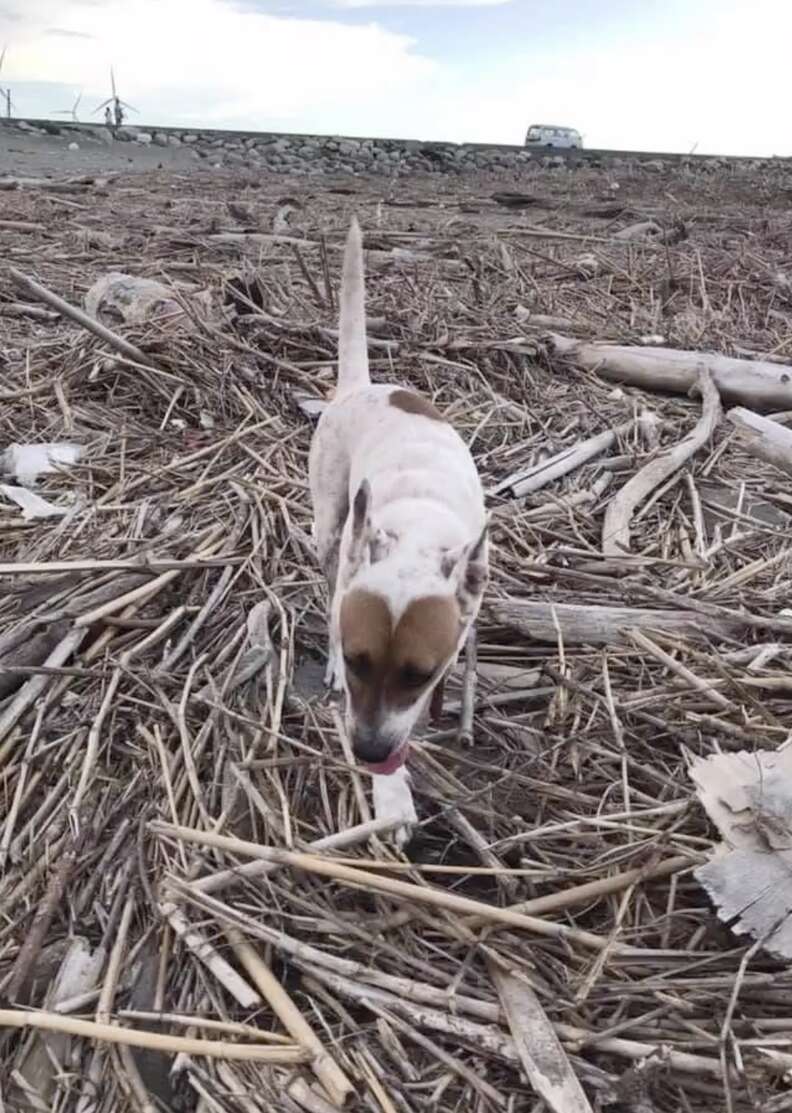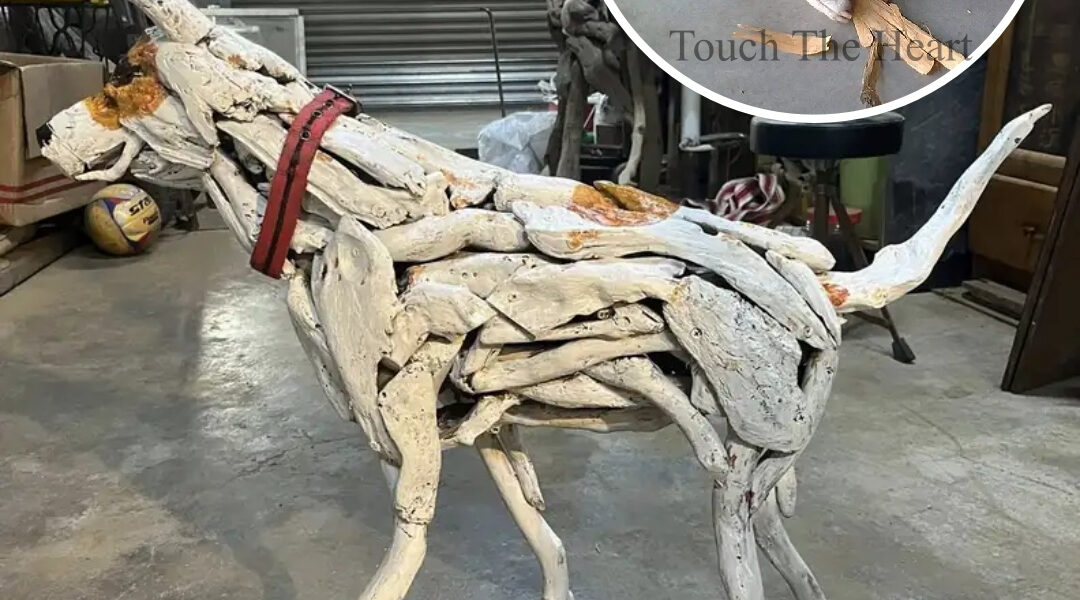For fourteen years, the beaches of Taiwan held a quiet ritual between an artist and his dog. Every few weeks, Liang Renchuan would walk along the shore, eyes scanning the sand for pieces of driftwood—nature’s sculptures, carved by time and tide. By his side was Hachiko, a dog with bright eyes, sandy paws, and a spirit as free as the ocean breeze.

Their bond began on a day marked by both loss and fate.
It was the night of Liang’s father’s funeral. Grief hung heavy in the air when a small, trembling puppy wandered into the funeral parlor as if guided by something unseen. Liang looked down at the stray, who gazed up with trusting eyes. “He appeared that night,” Liang recalled softly. “And he became part of my family.”
He named him Hachiko—after Japan’s legendary loyal dog. The name fit perfectly.

From that day forward, they were inseparable.
Each morning, Hachiko followed Liang to his studio, tail wagging, waiting for their next adventure. When the storms cleared and the waves returned their offerings, the two would head to the beach. Liang gathered driftwood—smooth, twisted, weathered fragments that he would later turn into art. Hachiko’s job wasn’t to carry wood, though. He had a different role.
“He was quite lively,” Liang said with a smile. “Carrying the wood was mostly my job. Hachiko usually just wanted to play.”

He would leap through the surf, chase after the wind, and circle Liang’s feet as the artist worked. Sometimes, when Liang paused to rest, Hachiko would lie beside him, paws stretched over the damp sand, watching the sea as if guarding his friend.
Back at the studio, Hachiko would curl up near the workbench, head resting on his paws as Liang pieced together the driftwood into life again—birds, waves, trees, and sometimes abstract forms that seemed to hold whispers of the sea. Occasionally, Hachiko would nudge a piece with his nose, as if offering his own creative touch. “He’d move the wood around,” Liang laughed. “Maybe he thought he was helping.”

Over time, photos of Liang’s artwork often featured the loyal dog sitting proudly beside the finished pieces. He wasn’t just a pet. He was part of the art—part of the story.
But life, like the tides, never stands still.
Earlier this month, Hachiko passed away. Fourteen years of companionship ended quietly, right there in the studio they had shared. Liang found him lying peacefully in his usual spot, surrounded by the scent of driftwood and paint.
“I thought I was prepared,” he said. “But the silence after he was gone—it was unbearable.”

In that silence, Liang did what he had always done when faced with emotion too deep for words: he created.
Using the driftwood they had gathered together, Liang began building something new—a life-sized sculpture of Hachiko. Each curve of wood, each line of grain, seemed to carry a memory: the splash of waves, the sound of laughter, the unspoken comfort of presence. “I wanted to leave a memento,” Liang said, “something that would stay after he was gone.”
The sculpture took shape slowly—a dog mid-motion, eyes gentle, spirit alive. When it was done, Liang painted it in warm tones, the color of earth and sun, and fastened Hachiko’s real collar around its neck. Standing before it, he whispered, “Go and have fun. My dad will be with you in heaven.”

And in that moment, the studio filled with the echo of both loss and love.
Liang placed the finished statue by the window where Hachiko used to lie, the sunlight falling over it in golden streaks. “We used to go to the beach together to get driftwood,” Liang later wrote. “Now I can only use driftwood to get you back again.”
Each time he visits the shore now, Liang feels Hachiko there—just beyond the waves, just out of sight. The sound of the tide carries something familiar, like paws splashing in shallow water. And when he bends to pick up a new piece of wood, he sometimes smiles, whispering, “You’d have liked this one.”

To outsiders, it’s just driftwood. But to Liang, every piece holds memory—each one a fragment of a love that refused to fade.
Grief, after all, is love without a place to go. So he gave it one.
The sculpture now stands as both memorial and promise: that love can take new forms, that loss can be shaped into beauty, that even when a heartbeat stops, the connection it created endures.

Dr. Stephanie A. Sarkis once wrote, “There’s no wrong way to grieve. You do whatever gives you comfort.” For Liang, comfort came through creation—through the slow, deliberate act of giving his best friend a second life out of the very material that had built their memories together.
And so, in a small studio by the sea, a driftwood dog keeps watch—forever young, forever home.
Each sunrise paints it in new light. Each gust of wind whispers its name.

And somewhere beyond the horizon, where earth meets heaven, a real Hachiko runs free again—waiting for the day his artist will join him, both chasing waves and gathering stories beneath the endless blue.





